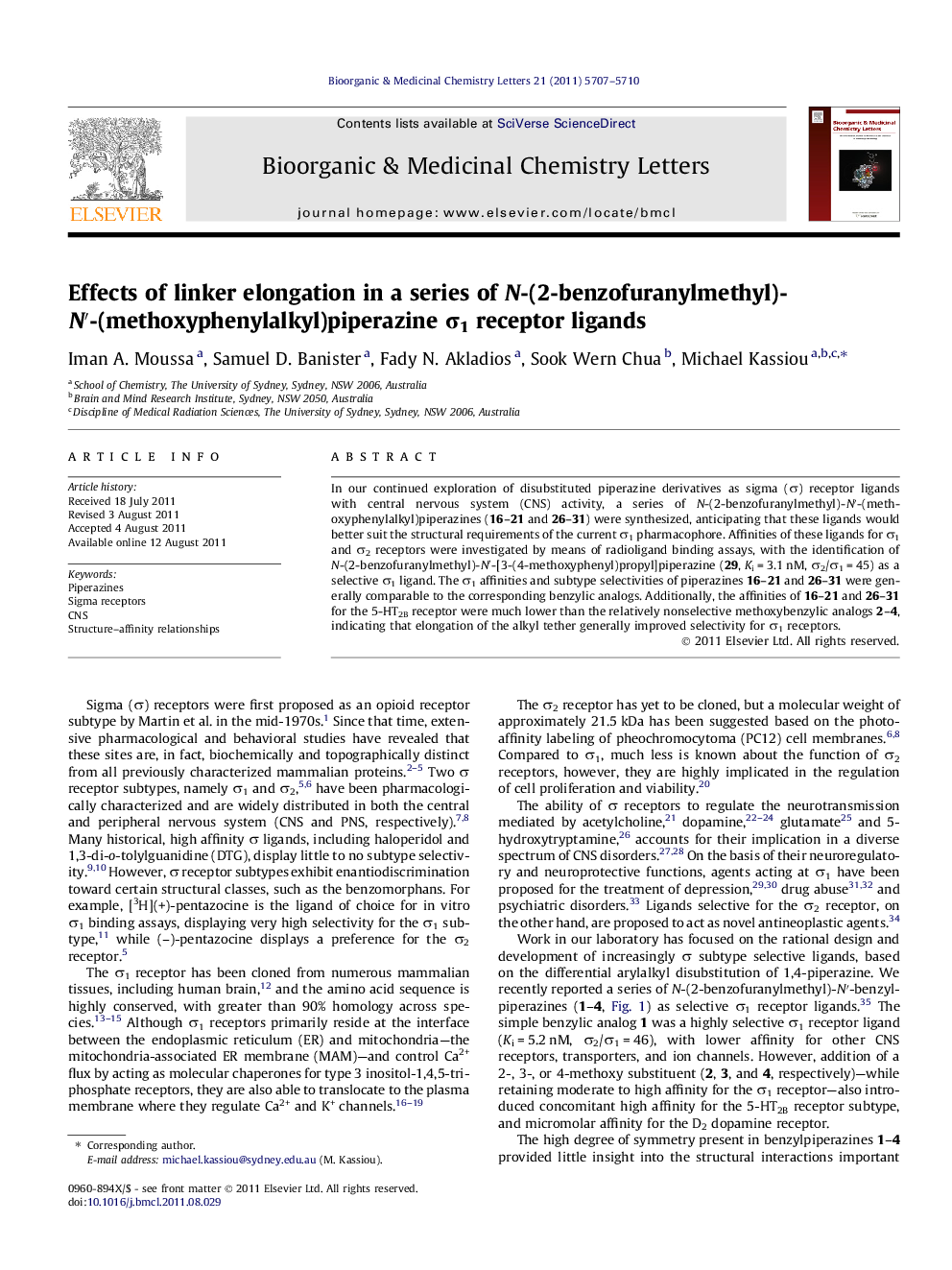| Article ID | Journal | Published Year | Pages | File Type |
|---|---|---|---|---|
| 1372525 | Bioorganic & Medicinal Chemistry Letters | 2011 | 4 Pages |
In our continued exploration of disubstituted piperazine derivatives as sigma (σ) receptor ligands with central nervous system (CNS) activity, a series of N-(2-benzofuranylmethyl)-N′-(methoxyphenylalkyl)piperazines (16–21 and 26–31) were synthesized, anticipating that these ligands would better suit the structural requirements of the current σ1 pharmacophore. Affinities of these ligands for σ1 and σ2 receptors were investigated by means of radioligand binding assays, with the identification of N-(2-benzofuranylmethyl)-N′-[3-(4-methoxyphenyl)propyl]piperazine (29, Ki = 3.1 nM, σ2/σ1 = 45) as a selective σ1 ligand. The σ1 affinities and subtype selectivities of piperazines 16–21 and 26–31 were generally comparable to the corresponding benzylic analogs. Additionally, the affinities of 16–21 and 26–31 for the 5-HT2B receptor were much lower than the relatively nonselective methoxybenzylic analogs 2–4, indicating that elongation of the alkyl tether generally improved selectivity for σ1 receptors.
Graphical abstractThe synthesis of a series of N-(2-benzofuranylmethyl)-N′-(methoxyphenylalkyl)piperazines is reported, anticipating that these ligands would better suit the structural requirements of the currently accepted σ1 pharmacophore. In vitro receptor screening reveals that elongation of the alkyl tether generally improved selectivity for sigma receptors over other CNS sites, specifically the 5-HT2B receptor.Figure optionsDownload full-size imageDownload as PowerPoint slide
